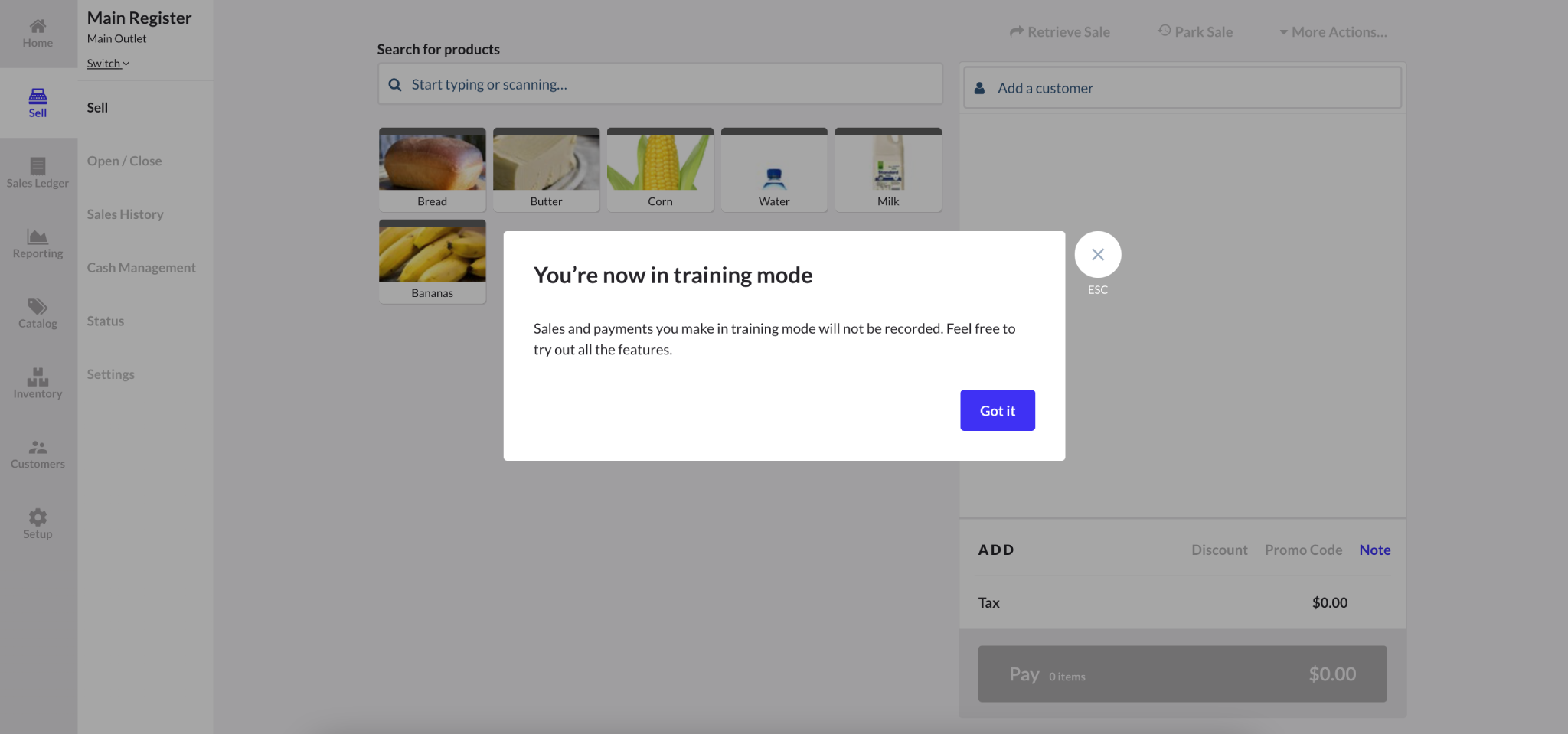
We’ve all heard the saying: “The customer is always right.” It’s been written in retail articles, plastered on the walls of offices, and cited in motivational speeches from company owners. But while retail is about keeping customers happy, there’s another key factor that’s often deprioritized: retail employee training.
Your employees are the most significant touchpoint between your product and your customers. When employees are positively engaged, they are your best brand ambassadors, creating a domino effect of brand evangelism that rubs off on your customers, strengthening your brand perception and sales in the process.
This post will tackle retail staff training and offer best practices on how you can ensure that your staff performs at their best. You will learn:
- Why retail training is important
- Creating a retail training program
- Why incorporating employee appreciation matters
- How long training sessions should be
- The importance of role-specific training
- Types of role-specific retail training
- Important of employee performance reviews
- What can be trained, and what should be hired for
- The power of roleplay
Best practices for hiring and building an all-star retail team
Lightspeed Supplier market is all about giving merchants the tools they need for a better supply chain.

Why is retail training important?
Retail turnover is no doubt high. In 2022, retailers saw a 75% turnover rate for hourly positions, an increase from the previous year. With an average of 3% of your annual payroll being spent on training activities, that adds up. It can feel like investing too much in training is a waste of time and resources.
However, the reality is that instead of unsustainably piling on costs, engaging and informative training can reduce your turnover. Employees that feel engaged and secure with a clear career path are more likely to stick around—that’s as true for retail as it is for any other industry.
Alongside potentially reducing turnover, training can reduce customer churn by ensuring everyone who stops into your store has a great experience. Good experiences typically translate into sales, after all.
Do: Plan your training curriculum for new hires
When introducing new employees to your team, it’s vital to have a clear procedure for training them on all the necessary aspects of your business. This should include everything from day-to-day operations to how to greet customers.
Some key items you should be incorporating in your training curriculum
Consider what the average day looks like for each role among your employee team. Your training plan should support your larger business goals but also include specific details for each role on your team.
Think about publishing this information in an employee handbook that employees can turn to at any time.
Training timeline
Include an overview of the formal training process and a timeline. This could look like:
- Days one to three:
- POS training: one hour. Review inventory management and sales processes.
- Legal and HR policy training: two hours. Review and sign waivers relating to employment law, rights and responsibilities, benefits and shift policies.
- Workplace conduct training: two hours. Watch training materials related to workplace conduct, including harassment policies, theft policies and whistleblowing.
- Days four to six:
- Customer service training: four hours across two shifts. Watch training materials about our customer service policies, then review with tests.
- POS training refresh: 15 minutes at the start of shift each day. Perform a test sale.
- Product training: two hours. Learn about our top products and brands and how we sell them.
- Days seven to ten:
- Shadowing: half of shift each day. Shadow a more senior employee in your role.
TIP: not all POS systems are easy to pick up. Go for an intuitive retail POS and payments platform with a dedicated training mode, like Lightspeed, that will cut down the training time needed, so your managers can focus more time on customer experience training. Training modes mean less work after the training session, because all the sales processed will not be recorded and therefore don’t need to be voided and deleted for accurate records.

Company mission and vision
Help your employees understand who you are as a company by educating them on your reason for existing, as well as your vision for the future. Don’t give them a ten-page essay, but new employees should walk away from training able to speak to customers about what your company stands for and why they should pick you over the competitors.
Product information and training
Educate your employees on the different products your company offers. It’s key for them to have an in-depth understanding of what they’re selling before they’re on the shopping floor talking to customers.
This can tie into your technology training—more on that below—if your point of sale system has rich inventory data, like notes and pictures, for easy reference.
Employee roles
Define, explain and even write out each employee’s responsibilities and expectations. This is a good time to talk about workflows and how an employee’s role fits in the overall ecosystem of your business.
Include a growth path—how does each role move up in the ranks? What are the requirements for a promotion? This will show new hires that you’re serious about their careers at your business.
Technology training
Incorporate an in-depth training on all hardware/software that’s a part of an employees day-to-day.
Tip: your point of sale provider may have training support. Philip Morris, a department store retailer based in the United Kingdom, quickly transitioned their staff to Lightspeed thanks to support materials like training and free webinars from our team.
Company policies
Inform employees about workplace best practices, reviews and company policies such as workplace rules and dress codes. Have them sign an agreement that they’ve reviewed the rules and codes, and know who to speak to if a policy has been violated and they need help.
Don’t: Underestimate the value of employee appreciation during training
Recognizing employees for a job well done is key to establishing trust and loyalty, and reducing turnover. 79% of employees cite lack of appreciation as a reason for quitting their jobs. Let that number sink in for a minute.
Creating a culture of appreciation starts during training. Does that mean you need to start handing out rewards to trainees left and right? No. The secret is simple (and less expensive): show them you care.
Recognition runs deeper than a gift card— it’s about giving praise and acknowledging a job well done. Our need for praise is deeply rooted in our psychology and self-esteem—receiving approval from people we respect verifies our sense of inner worth. Fostering a culture of appreciation is essential to a productive and happy workforce.
Motivate employees and trainees by making time for the following:
- Applaud employee efforts and strong performances
- Express gratitude on a regular basis
- Check-in with employees and ask questions
- Implement a peer-to-peer recognition program: this type of program is “35.7% more likely to have a positive impact on financial results than manager-only recognition”
- Set time aside for social employee events: celebrate life achievements, birthdays, or other social occasions.
Employee appreciation is a never-ending process, so consider this your ongoing task as a business owner or manager. Your trainees should know that their efforts are appreciated right from the start. Sometimes it’s all about just saying “Hey, great job today!”
Do: keep training sessions short
So you just got hired for a new job. You show up to your first shift… and they sit you down for eight hours of videos and readings to get you ready.
How much of that eight hours do you think you’d remember?
By keeping training sessions short—between fifteen minutes to an hour—you give new hires a chance to better absorb what they’re learning. For the very first shift, this could mean switching up the type of training every hour. Going forward, intersperse training with tasks so they can learn on the job.
Don’t: try to speed up training by cutting out materials
You want your new hires on the floor as soon as possible, but if they’re sent out to deal with customers with insufficient training, you’ll end up driving both your employee and your customer away.
While being sure to keep training sessions short, make sure they’re comprehensive. Even if they’re not likely to be on cash right away, they need to know how to operate the POS. Cleaning may seem like common sense, but training new hires in your specific cleaning protocols will make sure there’s a standardized base of knowledge across your employees.
The goal is to give new hires the confidence to approach any situation knowing exactly what your business expects them to do—which means, while taking care not to overload them with information all at once, making sure they have the information readily available.
Do: Provide role-specific employee training
The retail industry is well-known for inconsistent training, with 32% of retail employees saying they didn’t receive any formal training or training did not make them better at their jobs. Many employers see training as an unnecessary expense, when in reality the expense of having untrained staff is even higher, adding up to more mistakes, lower productivity, higher turnover, lower sales and customer churn. Ouch!
So, how do we turn this untrained ship around?
Your new hires may or may not have industry experience, so it’s important to make sure they get training on their specific role as well as your unique company processes. It’s all about smart planning, coordination, and attention to detail. Turns out giving new hires what they want is a win-win.
Make sure to include the following training techniques into your plan:
- Ask previous employees for feedback on their training experience
- Create simple training materials (without dumbing it down)
- Provide guided on-the-job training
- Coordinate shadowing with star employees
Another key component of role-specific training is educating new hires on workplace technology.
This will vary from role to role, but an important task for any retail business is teaching the ins and outs of using a point of sale (POS). A POS will likely be one of the main touchpoints for an employee, and whether they’re interacting with customers through a retail POS, or stationed at the checkout counter, you should be teaching them how to use these workplace tools through shadowing, tutorials, and even through training support from your POS supplier.
Learning is an ongoing process, but having a structured and personalized training plan will allow new hires to get quickly acquainted, feel more connected, and ultimately do a better job.
Types of retail training
Tailoring training to the unique needs of the different roles within your retail business is one of the keys to creating training programs that are not only effective, but they’re also engaging. But why does engagement matter? Well, research from Gallup shows that businesses with a high engaged workforce display 21% higher profitability and 17% higher productivity than a disengaged workforce.
With that in mind, let’s briefly look at some of the role-specific retail employee training you should consider offering
Retail sales training
Perhaps the most important type of role-specific training, retail sales training gives your staff the skills and confidence needed to effectively sell your products to shoppers. While you may have scenes from Glengarry Glen Ross running through your mind, that style of selling is decidedly old school.
Instead, modern retail sales training takes into account the way the balance of power has shifted from the seller to buyer. With smartphones and ubiquitous internet access in the US and Canada, buyers can easily research products, comparison shop, check prices and read reviews without ever entering your store, especially if you’re omnichannel and have an online store.
Instead of pushing for the quick close, your retail salespeople should focus instead on how they can add value to the shopping experience. Your role as the owner or manager should be on empowering your team with the training necessary to do that.
Consider also what the in-store shopping experience offers over buying online. The tangible nature of trying on clothing, holding products in your hands and comparing competing options in-person are all things that are much more difficult, if not impossible, to do online. Focus your retail sales training around these types of experiences and watch your sales skyrocket.
Retail customer service training
Customer service and sales share more similarities than many realize. At the end of the day, both parties are trying to satisfy customer needs. And when executed at the highest level, retail customer service often looks like a softer type of selling.
When dealing with unhappy or confused customers, it’s important to remember that the same paradigm shift that happened in sales also affects customer service. It’s easy for customers to see if others are experiencing the same issues. The same goes for researching possible solutions. With that in mind, the conduct of your team and how they handle delicate situations is your only real differentiator from competitors.
The ultimate objective of customer service training is to help your team maintain a positive attitude when dealing with angry customers, while doing all they can to ensure customers leave happier than they came in. With that in mind, most of your effort should be spent on roleplaying likely situations with your staff. Written or video training materials can lay the foundation, but nothing replaces roleplaying and live scenarios for getting good at dealing with difficult customers.
Product knowledge
Essential for both your sales and customer service staff, product-specific knowledge can set you apart from the competition, while also increasing customer satisfaction. Not only that, but positioning yourself as the category expert, and delivering on it, can be a boon for your brand reputation.
Check out some of the most effective ways to ensure your team has top-tier product knowledge.
- Allow your staff to take home and use products so they can see how they fit into their day-to-day lives.
- Many manufacturers offer training videos, spec sheets and other info that your team can study.
- Conduct role playing sessions where your team’s product knowledge is tested.
- Run contests (with prizes) where your staff are pitted against one another in a test of product knowledge.
Training for product knowledge can feel a lot like school. It’s not necessarily the most fun way to spend time. The solution is to make it into a game or connect it to something important like sales performance to get the buy-in needed to make it effective.
Don’t: Forget about regular employee monitoring and reviews
Setting clear expectations–-and communicating them to your employees–-is crucial to effectively train and build relationships with your employees.
Make sure to establish:
- Specific goals
- Timelines to meet those goals
- Routine informal check-ins to monitor performance
- Formal reviews to go over overall performance, manager reviews, and compensation
Regularly sharing details of employee performances is a great way to give trainees clarity on how well they’re doing their jobs, and where they need to improve. What many have termed the “never-ending performance review” is slowly becoming the norm, as companies opt for more frequent and informal reviews that allow for routine feedback, instead of just having one annual review. Routine feedback is a great opportunity to reinforce employee appreciation, acknowledging improvements and successes.
Tips for monitoring employee and new trainee performance:
- Use a POS system to create staff and sales reports
- Collect manager and employee feedback
- Gather customer feedback
Customers are a great resource to help you build employee reviews. Gaining insight on what consumers think of the people that represent your business is extremely valuable in improving upon employee management and training.
Some helpful tips to gather customer feedback include:
- Customer satisfaction surveys: Incorporate customer surveys into your email marketing strategy. These surveys will help you understand what your customers like, dislike or what they’d like to see improved when it comes to their employee interaction and overall support.
- Online feedback: Encourage customers to leave online reviews via sites like Google or Facebook, and be sure to look at them regularly.
- In-store feedback: Take some time to talk to your customers! Not every customer enjoys writing lengthy online feedback, so make sure to interact with your customers and ask about their customer experience. Tip: have comment cards in your store!
Do: Hire for attitude, train for skill
The success of your training program doesn’t just rely on your teaching methods, it also hinges on the inherent attitudes and values of your staff.
As Bruce Nordstrom puts it, “We can hire nice people and teach them to sell, but we can’t hire salespeople and teach them to be nice.”
That’s why it pays to hire trainable individuals with the right attitude. It’ll be much easier to train a positive person who’s open to learning and who shares your values than it is to modify someone’s default attitude and disposition.
As you might have guessed, Nordstrom is one company that hires people based on attitude rather than experience. In the book The Nordstrom Way authors Robert Spector & Patrick McCarthy talk about how the department store puts the attitude over aptitude concept to practice.
“The company hires nice people and teaches them to sell rather than trying to retrain salespeople taught other methods. Nordstrom believes the best people are have been trained by their parents while growing up.”
Another notable example is JetBlue. According to the Disney Institute, the airline believes that you can train for skill, but not for attitude, and it “has embedded this conviction in its front-line hiring process.”
To find individuals who have a natural service inclination, JetBlue conducts group interviews and observes how candidates interact with one another. This allows interviewees to assess applicants’ people and communications skills in a way that can’t be done during a one-on-one interview.
So the next time you’re on the lookout for new employees, be sure to look at their nature and disposition first, before evaluating their knowledge and skills. Implement ways to assess their natural inclinations through personality quizzes or, like JetBlue, by conducting group interviews.
Don’t: Take a one-size-fits-all approach
Once you have some new hires, take the time to learn more about each individual so you can figure out the best training method for them.
“The first thing I like to do is learn about my new employee; who they are, why they chose this job, what motivates them, how they learn best in school, their interests, etc.,” says Sarkis Hakopdjanian, principal at The Business Clinic.
“Learning about their motivations for working in their role helps me figure out how to motivate them during training. Knowing their preferred learning methods helps me customize my training approach based on how they best retain information,” he adds.
“For example, some people are visual learners, so I use images and infographics to communicate my point. Some people learn best by doing, so we focus more on role-playing. Also, learning about their interests helps me create analogies or examples that are familiar to them.”
Do: Role play regularly with staff
Role-playing can be quite effective, especially when it comes to sales. As the team at Graff Retail notes, role-playing “can be your #1 key ingredient to help bring your sales training to life and it will be the very thing that makes your staff finally just ‘get it!’”
Hakopdjanian echoes this and says that role-playing “helps them crystallize their training through practice and repetition. This also helps when looking for opportunities to develop their skills further.”
According to Graff Retail, there are several ways to eliminate role-playing’s awkward factor and make it fun. Here are some of their suggestions:
- Role-playing doesn’t have to be formal. Start by observing your staff out on the sales floor. In between customers, spend some time re-enacting sales conversations that didn’t net out in a sale. Keep it casual.
- Role-playing doesn’t have to be in front of the entire sales team. Warm your staff up to the idea by using role-playing in your one-on-one coaching sessions. Just you and your staff member; no judgment.
- Role-play the good and the bad. You’ll be so surprised how quickly your staff grasps a selling concept when you act out “what not to do!” Not only will it cause uproarious laughter which relaxes the team, it will clearly reveal where things went sideways in the sale process.
- Once your staff is comfortable with role-playing, integrate one scenario into every Shift Starter Meeting. This is a great way to kick-off each shift during the day. It immediately gets everyone thinking about sales and it allows managers to select one selling skill a day to focus on.
- During larger staff meetings, allow time to role-play as a group. Put a bunch of “What Would You Do?” scenarios in a hat and give everyone a chance to get up and act out the perfect sale.
Don’t: Be too rigid with the rules
Pay attention to the rules and guidelines that you train employees on. While these are necessary to keep employees in line and ensure consistency in procedures, there may be some areas in your business that don’t require rigid rules. In some cases, it may be more beneficial to empower employees to use their judgment and be creative.
For example, while it’s certainly best to have step-by-step instructions when training people on how to operate store equipment and software, you can probably give employees more freedom when it comes to serving and delighting customers.
Nordstrom is famous for its staff empowerment practices. Take its store returns policies, for instance. According to the retail giant, when it comes to items bought in their stores, their return policy is… to not have one.
“We don’t actually have a return policy for purchases made at Nordstrom stores or at Nordstrom.com,” they state on their website. “We handle returns on a case-by-case basis with the ultimate objective of satisfying the customer. We stand behind our goods and services and want customers to be satisfied with them. We’ll always do our best to take care of customers—our philosophy is to deal with them fairly and reasonably; we hope they will be fair and reasonable with us as well.”
In other words, Nordstrom leaves each return situation up to the employee and encourages them to use their judgment and focus on satisfying the customer.
Of course, this doesn’t mean you should chuck your store policies out the window. Some retailers can’t afford not to have a return and refund policies. What you can do, however, is look at the different areas of your business and determine which ones need strict rules and which ones don’t, and then train your employees accordingly.
Employee training matters
Employees are the face of your company. Providing them with the proper tools and training ensures they can put their best foot forward from day one.
Think of training as an investment in the future of your company—if you genuinely invest in your employees and inspire them to share your passion, they’ll come to work every day ready, and excited to give you their best–-and will share that enthusiasm not just with your customers, but with the next round of trainees ready to become your star employees.
Make your training sessions smooth with an easy-to-use system like Lightspeed. Watch a demo and see what we mean.

News you care about. Tips you can use.
Everything your business needs to grow, delivered straight to your inbox.




